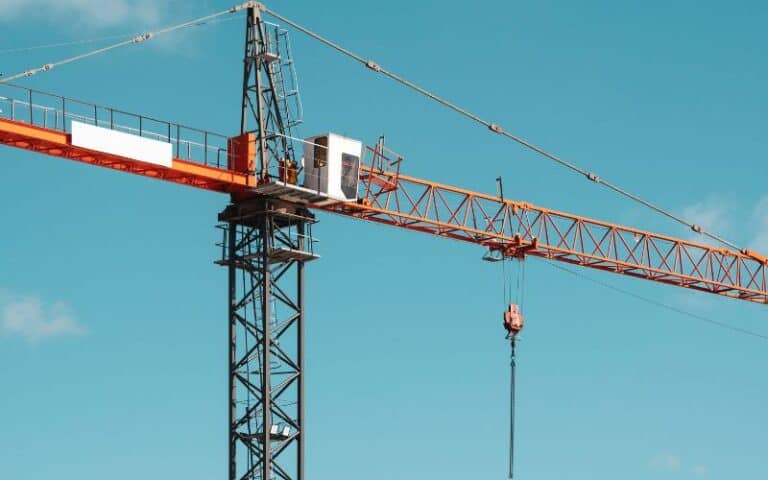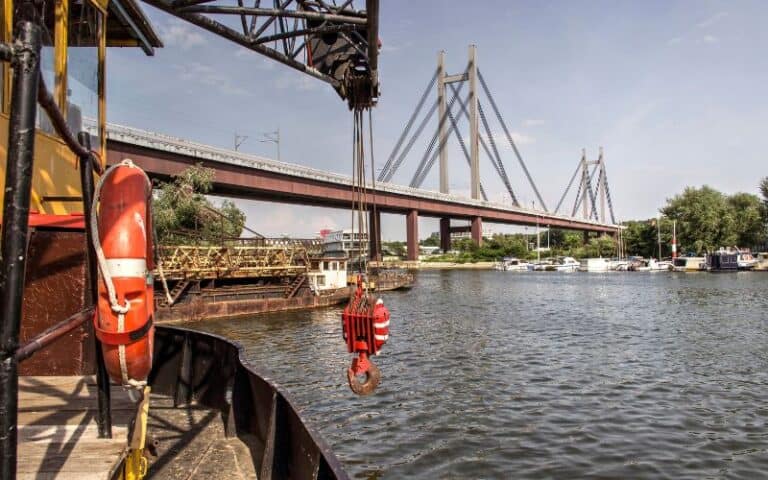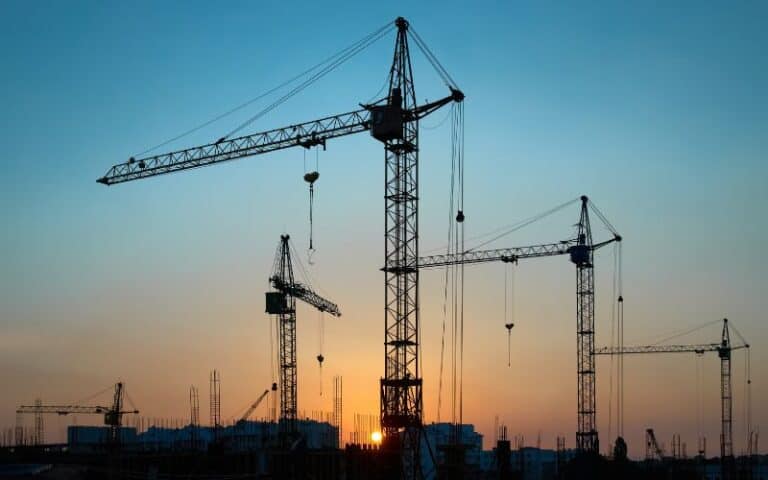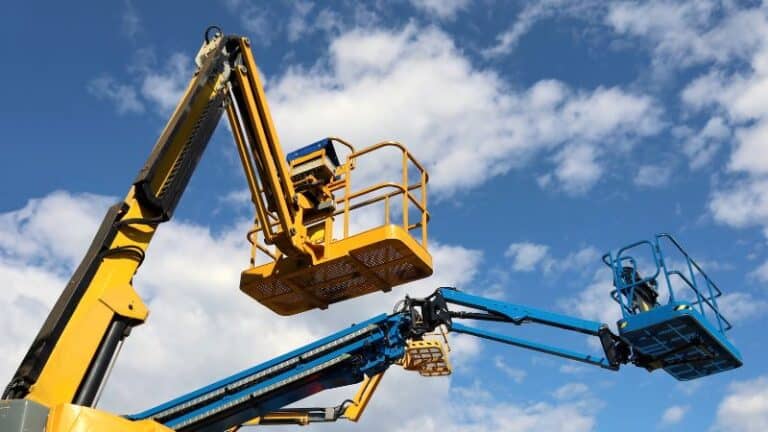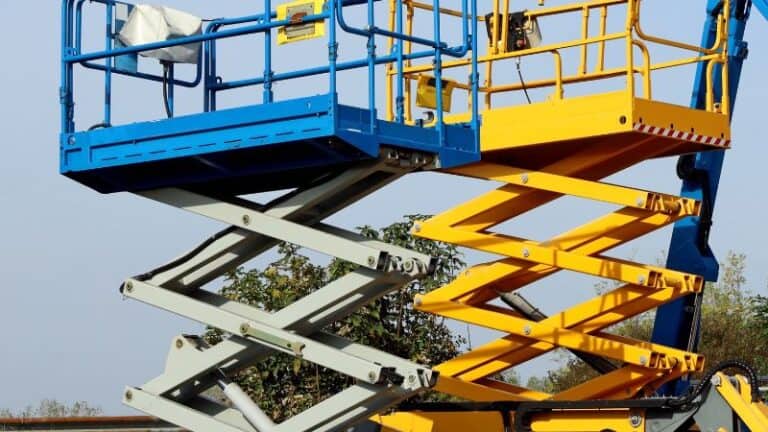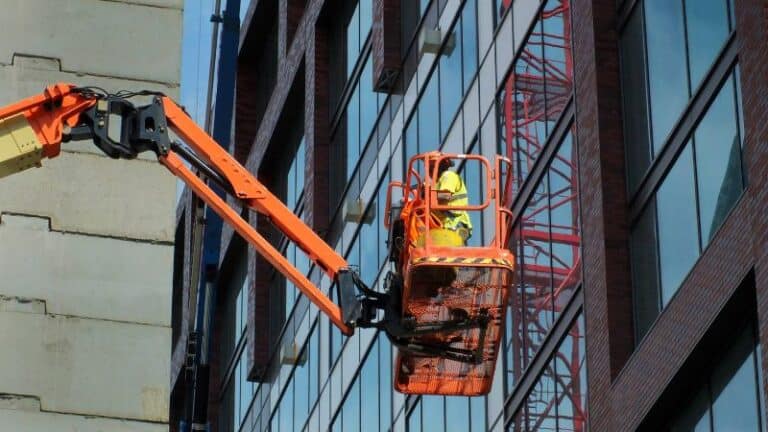The Construction Hoist or the Outdoor Elevator mainly consists of the following parts: guide rail bracket, cage, concrete carrying apparatus, rebar carrying apparatus, underframe, protection fence (selected according to actual situation), attachment devices, cable guide frame, cable pulley system, cable arm bracket, driving system, and electrical system.
1. Guide rail bracket(mast)
The guide rail bracket is a track, with which the cage moves along in vertical direction. It comprises the mast sections (sectional dimension: 650/650mm, length: 1508mm) that are connected by M24×230 bolts. The mast sections are made of the seamless steel pipe, angle steel and others. The gear racks are pressed against the profile of mast section by three hexagon socket screws.
2. Cage
The cage is made by welding the structural steel, mesh grid, steel plate and other materials together. Its upper part is connected to the driving system and the lower part is in combination with concrete delivery device. The main channel is installed with guide roller and safety hook, and there are overhead doors on the top, bottom and both sides.
3. Concrete carrying apparatus
Connected to the cage via pin rolls, the concrete carrying hopper features a maximum volume of 0.7m3. The hopper entrance directly faces the door on the bottom board of the cage. Through the door, the concrete is dumped into the hopper. The unloading speed can be regulated by adjusting the open angle of the hopper entrance.
4. Rebar carrying apparatus
The rebar carrying apparatus is constituted of suspender, rebar frame, rebar clip, etc.
a. It is helpful to heighten the mast section.
b. It helps operators fix or lift the rebar.
Note: The rebar frame should be dismantled when the apparatus is not carrying materials.
5. Underframe and protection fence
The underframe is formed by welding channel steel with steel plate. It is connected to the guide rail bracket by bolts and anchored with the concrete foundation of construction hoist by anchor bolts. The underframe is able to sustain the entire vertical loading weight and transfer the load force to concrete foundation.
6. Wall tie devices
The Wall tie devices refer to the connecting parts between the guide rail bracket and the building, aiming to maintain the stability of guide rail bracket as well as the integral structure.
7. Cable guide rail
The cable guide rail is installed to protect the cable. It restricts the cable within the guarding ring of cable guide rail and also prevents the cable from twinning with other facilities when the construction hoist is running. Before installing the cable guide rail, the operator should make sure the cable arm and the cable can fluently thread the guard ring without touching the cage.
8. Cable pulley system
When the hoist runs to a high position (over 150m), it is more appropriate to adopt a cable guiding system with a pulley so as to reduce the voltage drop of power cable itself and avoid the problems caused by cable strength.
9. Cable arm frame
The cable arm frame is settled on the inner side of the cage. It is used to drag the cable to smoothly go through the guard ring of the cable guide and reduce the risk of scratch or twist of the cable.
10. Driving system
The driving system is combined to the top of the suspended cage by using pin rolls. It consists of the driving board, driving frame and three driving units.
11. Electrical system
The construction hoist can use the VVVF variable frequency speed control system that can achieve continuously variable speed change from 0 to 90m/min. Also, the electrical system is composed of the upper and lower electrical cabinets, resistance box, cage operation box, main control cable, various spacing or limit switch, etc.

